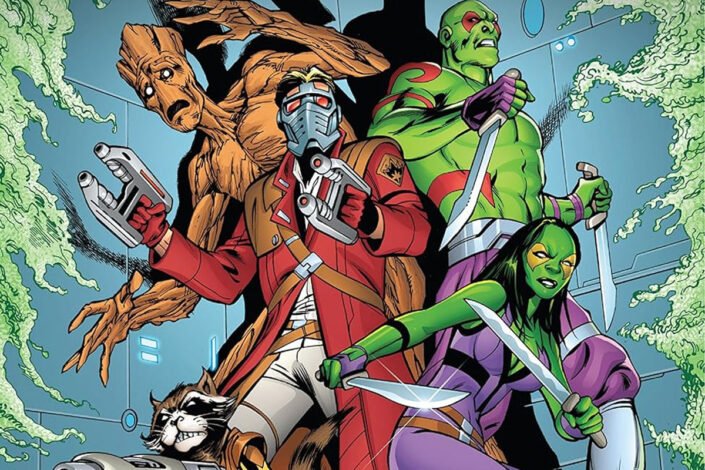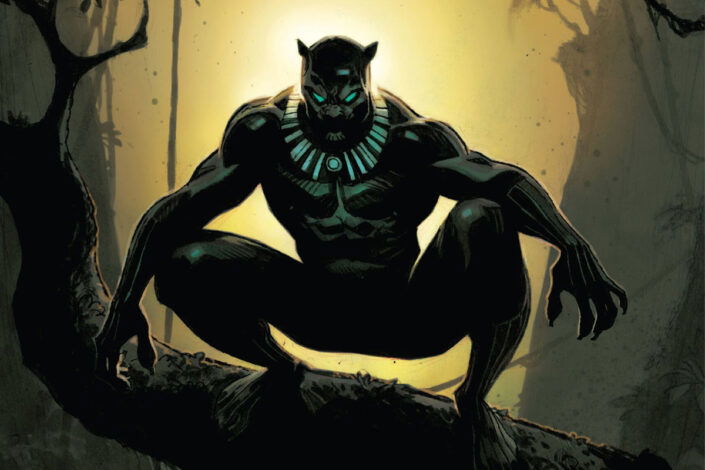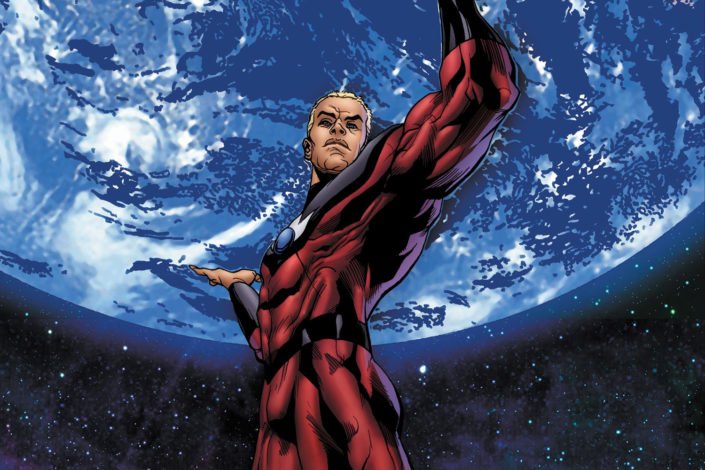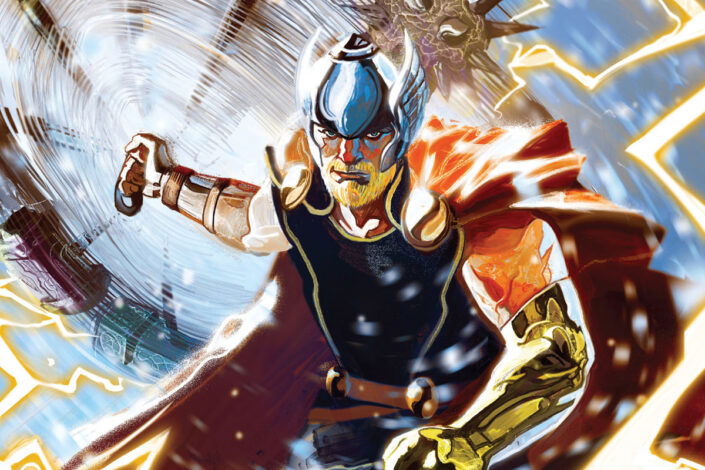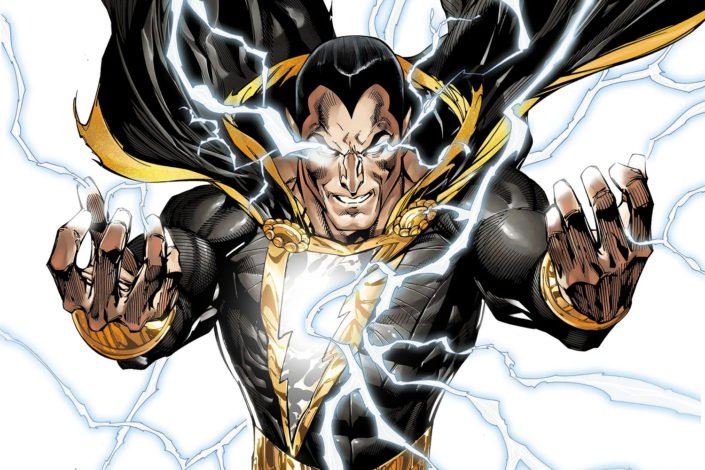
Officially created by Charles Nicholas Wojtkoski in 1939 (working for the Eisner and Iger shop), Blue Beetle is a superhero who started his career at Fox Comics. Charlton Comics acquired FOX Comics and, ultimately, was itself bought by DC Comics. That’s how Blue Beetle joined the Justice League. In truth, the original Blue Beetle was not the same as the one that became friends with Booster Gold.
Everything began with Dan Garret, the original Golden Age Blue Beetle. Introduced in Mystery Men Comics #1 (August 1939), Dan was a Rookie patrolman and the son of a police officer killed by a criminal. He simply became a vigilante, without powers, who wore a bulletproof blue costume–looking a lot like The Phantom. At some point, he temporarily gained power with the help of a special vitamin. He even got a sidekick named Sparky. Also, during World War II, Garret became a government agent–he got his cop uniform back after the war ended. As time went by, he gained even more powers, but that didn’t save him from Fox Comics going out of business.
Charlton Comics reprinted some Blue Beetle comics for a time and, during the Silver Age of comics, launched a new series–in 1964, written by Joe Gill. This time, Dan Garrett (with two “t”) was an archaeologist who discovered a mystical scarab during a dig in Egypt. This artifact gave him superpowers. Like Shazam, he only needed to say the word (“Kaji Dha!” in his case) to transform into the Blue Beetle. This Dan Garrett only got two years on the newsstands before getting replaced.
Introduced by Gary Friedrich and Steve Ditko in a backup story in Captain Atom #83 (November 1966), Ted Kord was a genius-level inventor and a gifted athlete without superpowers who operated out of his airship, “the Bug”. When he died, Garrett passed the torch to Ted–years later, DC Comics retconned his origins by adding that Ted was a former student of Dan Garrett. The series was canceled shortly after its launch.
When Charlton Comics went out of business in the early ’80s, AC Comics bought the right to the character, among others, did some stories, then the rights reverted back to Charlton, and DC Comics purchased them.
Using the Crisis on Infinite Earths event, DC Comics introduced Charlton’s characters into its newly revised universe. After the Crisis ended, Len Wein wrote a new Blue Beetle series after penning Secret Origins Vol. 2 #2 in which he rewrote Ted Knight’s origins. After 24 issues, the series was canceled, but Blue Beetle joined the Justice League International not too long after and found a new life. Ted became Booster Gold’s best friend, a relationship that defined the hero as a proper character in the DC Universe.
In 2006, DC Comics decided to retcon and expand upon the Blue Beetle mythos with the help of Jaime Reyes. Introduced in Infinite Crisis #3 (February 2006), he really became the new Blue Beetle in Infinite Crisis #5. Created by Keith Giffen, John Rogers, and Cully Hamner, Jaime bonds with the scarab, and it is revealed that it is an artifact alien in origin. Soon, Jaime became friends with Booster, and joined the Teen Titans and even the Justice League.
Read More »Blue Beetle Reading Order (Ted Kord and Jaime Reyes)


